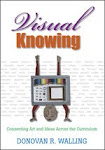That was the title of a faculty recital I attended on a
recent evening.
Fully, it was “Franckaphilia: The Complete Organ Works of César
Franck – Part I: From Palace to Paradise,” performed by Janette Fishell, IU
Jacobs School of Music Organ Department Chair. She performed in Auer Hall on
the magnificent and relatively new (dedicated in 2010) Fisk organ, named the
Maidee H. and Jackson A. Seward Organ. A Part II recital has been scheduled for
January 2017.
 |
| César Franck |
Born in Liège, in what is now Belgium, César Franck (1822 –
1890) spent his adult life in Paris working as a pianist, organist, and
composer. His work is typical of late Romantic musical compositions, but very
enjoyable even if one isn’t predisposed to the Romantic period. This recital
was composed of two sections. The first was “Trois pièces: No. 1 Fantaisie in A
Major, No. 2 Cantabile, No. 3 Pièce héroïque,” followed, after a brief pause,
by “Trois chorals: No. 1 in E Major, No. 2 in B Minor, No. 3 in A Minor.” Of
all of repertoire, my favorite, and generally a crowd-pleaser, was the truly
heroic, even bombastic, “Pièce héroïque.”
 |
| Fisk Organ in Auer Hall IU Jacobs School of Music |
I have been told that the Auer Hall organ is particularly
well suited to Romantic music. I wouldn’t know. I have enjoyed a number of
recitals and concerts there, including the evening previous to this concert,
when a young Mexican harpist of our acquaintance played his senior recital
there. It’s a wonderful, contemporary, mid-size (400-seat) concert hall—a fine
facility in a very fine school of music.
Franck himself was associated with a fine organ. In 1858 he
became the organist at Sainte-Clotilde, a basilica church on the Rue Las Cases
in the Saint-Germain-des-Prés area of Paris, and kept that position for the
rest of his life. A year later the church acquired its famous Aristide
Cavaillé-Coll organ, played by Franck and a number of later well-known
composers. Franck subsequently became a French national and in 1872 was
appointed to a professorship at the Paris Conservatoire.
Who knows whether I’ll manage to take in Part II of
Franckaphilia, but if it happens I’m sure it will be equally enjoyable.








